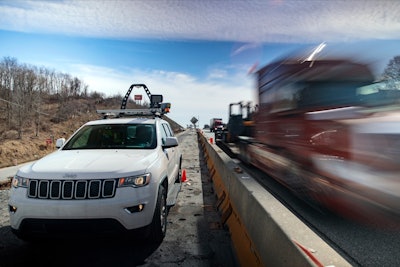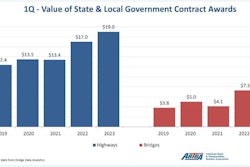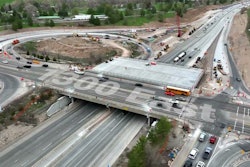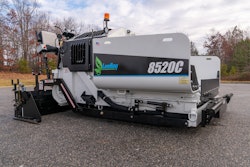
Add Indiana to the list of states with cameras at work zones to deter speeding to increase safety.
Gov. Eric Holcomb recently signed a bill that will allow cameras for speeding enforcement in up to four worksites at a time. The pilot program is scheduled to take effect in mid-2024.
The law defines worksites as areas where highway construction, reconstruction or maintenance is occurring or where a highway area is designated as a worksite with signs.
Violators face a civil penalty if they are caught driving 11 mph or more over the speed limit at a highway worksite, according to the law.
A first offense yields a written warning; a second offense is a $75 penalty, and each violation after that will result in a $175 penalty.
The Indiana Department of Transportation is charged with developing the pilot program and may contract with state or local police to hire off-duty officers to patrol the highway worksites. The department can also hire a third-party vendor to help administer the program. Cameras will be used to photograph rear license plates of violators, determined by radar.
The speed cameras can only be used when highway construction or maintenance is occurring and workers are present. The department is limited to buying four speed camera systems.
Before installing the cameras, INDOT must conduct a public information campaign about the cameras and post signs alerting drivers approaching a monitored worksite that speed cameras are in place.
Those operating the camera systems must be an INDOT employee or a state police officer and undergo training beforehand.
All photos taken are to be confidential and only of the rear plate. The photos have to be destroyed within two years of being taken.
Indiana joins at least 10 other states that allow speed cameras in work zones. Most recently, Washington State adopted cameras, starting in July 2024, and New York and Connecticut started pilot programs this year. The various programs have differing requirements, but all seek the same stated goal of reducing crashes caused by speeding in and around work zones.
Two recent publicized fatal work-zone crashes, in Maryland where six highway workers were killed and in North Carolina where an asphalt superintendent on an I-40 repaving and widening project was struck and killed, have highlighted the dangers highway workers face.
The Federal Highway Administration has issued operations guidelines for speed cameras for state and local governments. The $1.2 trillion federal infrastructure law also includes funding for states wanting to adopt camera enforcement in work zones, but they must first enact legislation allowing their use, according to the American Road & Transportation Builders Association.
“ARTBA encourages members to advocate for use of speed safety cameras to improve work zone safety across the nation,” the association says.
“For more than two decades, speeding has been involved in approximately one-third of all motor vehicle fatalities,” according to the National Highway Traffic Safety Administration.
The FHWA guidelines stress that the camera systems should not be used as a revenue generator but strictly for increasing safety. It also recommends public transparency for all revenue from citations and that the revenue be used for the safety program rather than for unrelated expenses.















